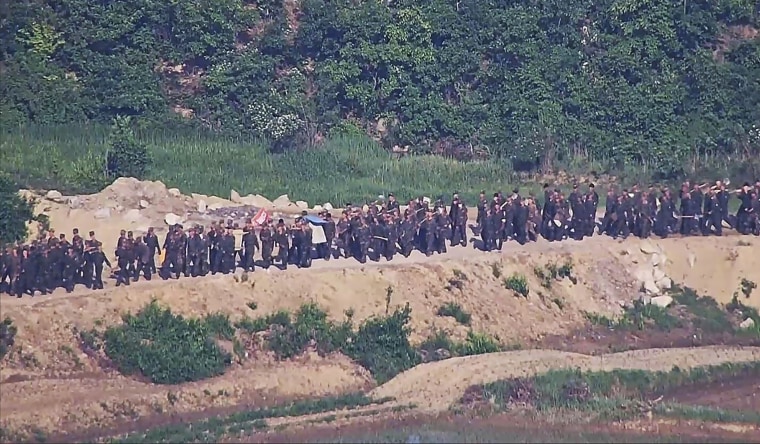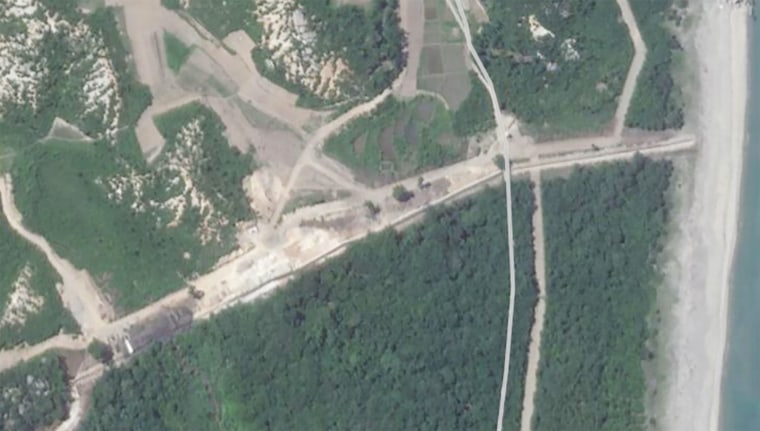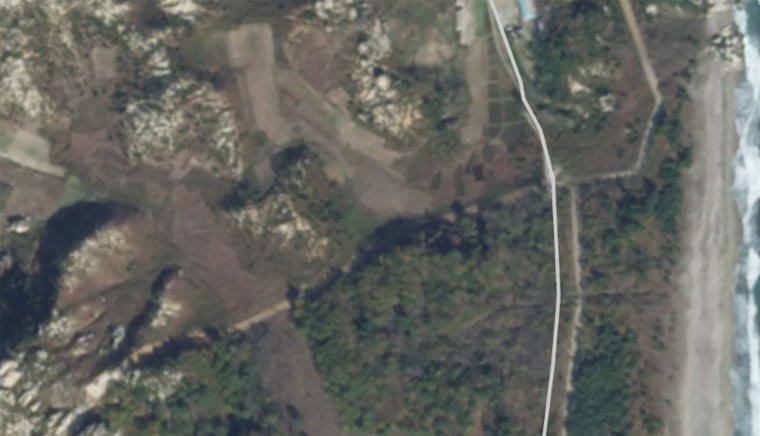A key U.S. ally fired warning shots Friday — live shots to repel North Korean soldiers and a diplomatic broadside to counter Russian President Vladimir Putin — as tensions rise after his new mutual defense pact with Kim Jong Un.
South Korea, which has so far provided only non-lethal aid to Ukraine, said it was considering arming Kiev in response to a newly forged alliance between Moscow and Pyongyang reminiscent of the Cold War and that has alarmed Western officials.
Putin said doing so would be a “very big mistake.”
“If this happens, then we will also make appropriate decisions that the current leaders of South Korea would not like,” he said during his state visit to Vietnam on Thursday, which immediately followed a lavish visit to Pyongyang. “We reserve our right to supply weapons to other regions of the world,” he added.
The Russian president’s saber-rattling continued on Friday, when he said Russia will continue to develop its nuclear arsenal as a deterrent.
As Putin made a rare visit to his North Korean counterpart in Pyongyang on Wednesday, the two leaders signed a comprehensive strategic partnership that allows for mutual defense in the event of an attack, as well as transfers of military technology that could help Putin’s war in Ukraine. and to Kim’s nuclear policy. ambitions.
This angered officials in Seoul, with national security adviser Chang Ho-Jin saying on Thursday that “we plan to reconsider the issue of arms support for Ukraine.” In response, Putin drew an equivalence between the West’s arming of Ukraine and raised the possibility that he would do the same for North Korea.
“As for where these weapons will end up, we can also say: ‘Well, the Westerners supply weapons to Ukraine’ and say ‘We don’t even control anything here, and it doesn’t matter how they are used.’ ,” he said.
He continued: “So we can say it similarly: ‘We have supplied something to someone and we have no control over anything after that.’”
Putin’s comments mark the Kremlin’s latest intervention in Asian geopolitics and further increase tensions between South Korea and Japan, key allies of the United States, and an increasingly emboldened North Korea.
“It’s incredibly concerning,” State Department spokesman Matthew Miller said at a news conference Thursday. “It would destabilize the Korean peninsula,” he said.
Seoul summoned Russian ambassador Georgy Zinoviev on Friday, and South Korea’s Foreign Ministry issued a statement demanding that “Russia immediately stop military cooperation with North Korea.” The ministry added that the Kremlin’s support threatens its security and violates UN Security Council resolutions. “South Korea will resolutely respond to threats against South Korea’s national security,” the statement said.
The Russian Foreign Ministry responded that “attempts at threats and blackmail against Russia are unacceptable” and that the agreement was bilateral and not directed at third countries.
The United States and South Korea say North Korea has already provided Russia with millions of munitions and dozens of ballistic missiles for use in Ukraine. Both Moscow and Pyongyang deny exporting weapons, which would violate sanctions.
Commenting on the prospect of South Korea arming Ukraine, Miller said, “that’s a decision that each country has to make in terms of whether they’re going to supply weapons to Ukraine.”

It is in this diplomatic context that North Korean soldiers crossed the border for the third time this month on Friday “while working within the demarcation zone,” according to Seoul’s Joint Chiefs of Staff. The soldiers returned to the North Korean side after South Korean soldiers fired warning shots. Gunshots and loud warning messages, they added. Technically, the Koreas are still at war since the Korean War ended in 1953 with an armistice rather than a peace treaty.
While Seoul has described the crossings as involuntary, commercial satellite images obtained by NBC News showed that a new wall-like barrier was being erected in recent months along parts of the North Korean side of the demarcation zone (DMZ). , which is 4 kilometers thick. buffer zone, half on each side of the border line.


“The North Koreans are building sections of wall, not a continuous wall across the entire DMZ,” Leif-Eric Easley, a professor at Ewha University in Seoul, told NBC News. Border tensions have been rising for some time, and South Korea has resumed aerial surveillance. near the border and declaring parts of the 2018 military agreements void. Officials said in November that both decisions were in retaliation for the launch of a North Korean satellite. After that exchange, Kim suspended the agreements entirely, reestablishing guard posts and sending garbage-filled balloons across the border.
Easley said construction of the barrier could violate the armistice agreement, which states that only “persons involved in civil administration and relief” or those authorized by the U.N. armistice commission can enter the area.
“What they’re building is probably aimed at both keeping their countrymen in and keeping South Koreans out,” Easley said.



